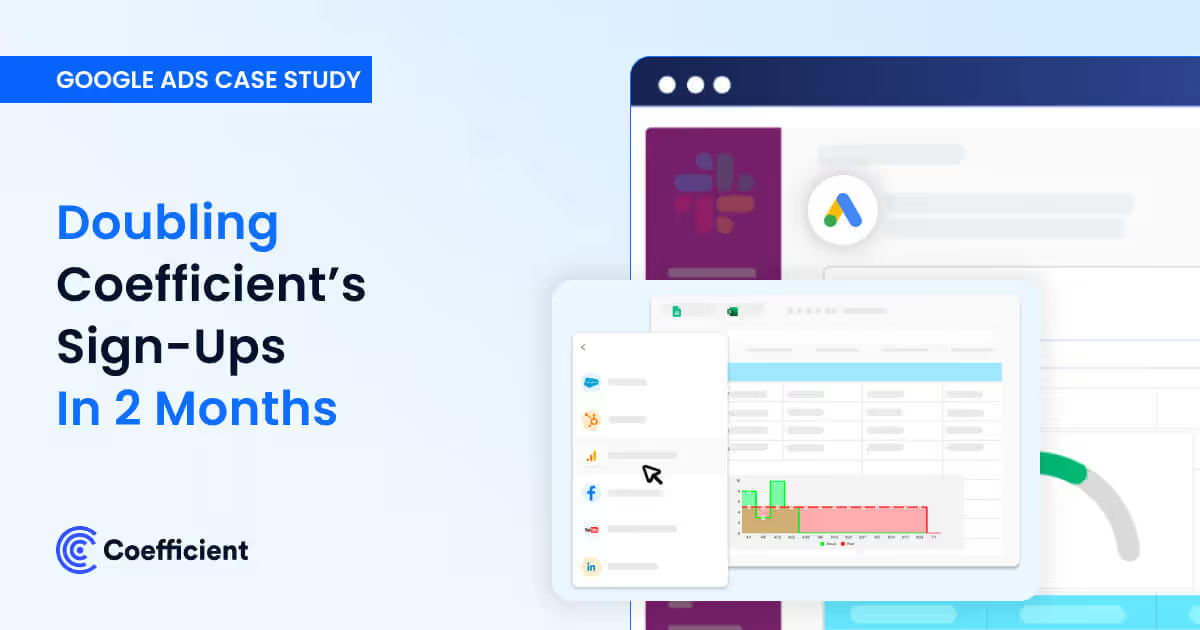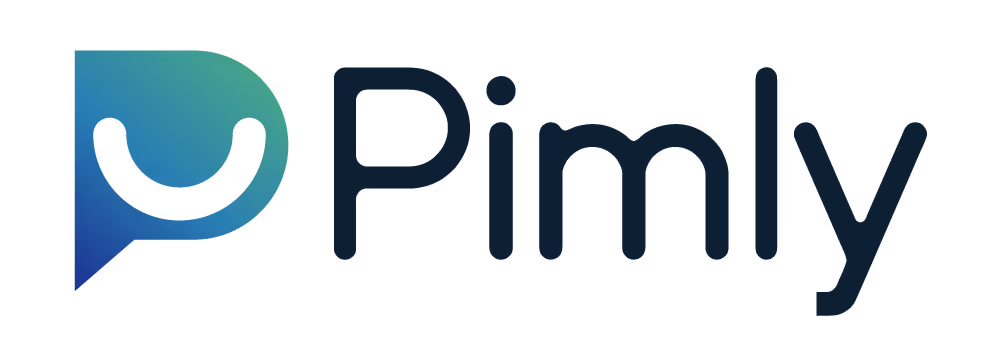
Google & LinkedIn Ads for SaaS Case Study
5x Return-On-Investment After 2 Months
About
Pimly
Pimly is a B2B SaaS company that offers a product information management (PIM) system for small to midsize manufacturing companies. Their Salesforce-native solution consolidates and organizes branding content, making it simple for businesses to update marketing assets across all channels from a single platform.
They compete in an extremely competitive industry, and their in-house team struggled to generate leads. CPCs were high, CTRs were low, and their campaigns were not delivering the results they needed. They brought InterTeam on to fix that, and we did not disappoint.
Within two months, Pimly achieved:
- 30% increase in conversion rates
- $100,000 enterprise deal closed
- 5x return on investment
In this Google & LinkedIn Ads for SaaS case study, we break down the exact strategies we used to overcome high CPCs, improve CTRs, and generate high-quality leads.
Why Pimly Chose InterTeam
Pimly operates in a highly specialized industry, targeting a very specific audience while competing against well-established advertisers. Their in-house team struggled to generate qualified leads.
They needed help standing out in a crowded market, which is exactly what led them to InterTeam. With proven PPC expertise across Google, Bing, and LinkedIn Ads and a focus on optimizing campaigns for lead quality, we were the right partner to scale their efforts.
Pimly came to us with a clear goal: generate at least five qualified leads per month.
It was a reasonable target, and one we had consistently exceeded in past campaigns, so we knew we could knock it out of the park. With most of our campaigns, we start with a free audit of existing accounts. But with Pimly, we were starting from scratch. So instead, we dug deep into their market, identified a few unique challenges, and created a strategy tailored to their industry.
Our Proposal
The primary challenge we faced was the competition. The PIM industry had low search volumes and highly competitive keywords.
Broad terms like “product information management system” or “PIM” often returned three or four competing ads at once. CPCs frequently climbed above $30, and the few leads those terms produced were often unqualified. It was an unsustainable combination.
To overcome this, we designed a strategy built around three campaign pillars:
- High-intent product information management keywords
- Competitor campaigns targeting platforms like Salsify, InRiver, and Akeneo (filtered for purchase intent with modifiers like “PIM tool” or “PIM reviews”)
- Retargeting audiences through LinkedIn, Display, and Lead Generation to stay in front of qualified visitors
This structure gave Pimly a strong starting point. But no PPC campaign runs perfectly to plan. Driving long-term success comes down to proper tracking and continuous optimization, so our strategy was built to evolve with regular reporting and ongoing A/B testing.
The 3-Phase Google & LinkedIn Ads Strategy That 5x ROI
Pimly loved our proposal and decided to move forward with our services. They assigned us a clear target of delivering at least 5 leads per month. In the end, we doubled expectations, and this is the exact strategy we used to do it.
Phase 1: High Intent Google Ads
We started with Google Ads, which gave us a strong entry point for reaching top-of-funnel audiences. But as our research showed, we didn’t want to waste budget on broad keywords with high CPCs and poor lead quality.
Instead, we focused on keywords that highlighted Pimly’s unique selling proposition. Pimly is the only PIM software built on Salesforce, which meant that even within this niche industry, the software worked only for a specific subgroup of users. That became our target audience, with keywords that included “Salesforce,” giving us a clear way to amplify ad campaigns.
This allowed us to reach high-intent audiences while filtering out those who couldn’t use the product. But it quickly raised another issue. “Salesforce” is a trademarked term, and our early ads were flagged for using it in the copy.

To resolve this, we submitted a Google Trademark Exemption Request Form. This took some time, but we were eventually approved. All it took was explaining that we were a Salesforce partner and that our software added additional functionality.
Alongside Salesforce keywords, we launched competitor campaigns targeting platforms like Salsify, InRiver, and Akeneo. To avoid wasted spend, we filtered these campaigns with high-intent qualifiers, like “[Competitor] PIM Tool,” “[Competitor] PIM System,” and “[Competitor] PIM Reviews.”
Lead Magnets
Once the trademark exemption was approved and competitor campaigns were live, CTRs jumped 29%, and Salesforce PIM keywords grew 68%. But we weren’t seeing the level of conversions we expected from the traffic.
We identified this early and quickly realized our CTAs were too aggressive for top-of-funnel audiences. Pimly is a high-ticket software solution with an annual product lifecycle. It is a big financial and operational commitment, and like many SaaS solutions, it has a long sales cycle.
We had been pushing too early for a Booked Demo CTA. Recognizing this, we shifted to a lead magnet strategy.
Lead magnets are free content that you can offer to leads in exchange for an email form submission. It’s less high intent than booking a demo, but if you know what you’re doing, you can leverage a lead magnet to book a call later on, either through sales follow-ups or strong email nurture sequencing.
For this campaign, we created ebooks and guides tailored to our keyword categories. For high-intent general keywords, we built assets like the “Salesforce Product Information Management Guide”.

For competitor keywords, we created competitor-focused assets, like the “Salsify Salesforce Connector Guide.”

In total, we created eight different keyword-optimized assets, each supported by a dedicated Unbounce landing page. Every page was built with conversion-optimized designs and keyword-optimized copy to improve ad relevance scores and lower CPCs.
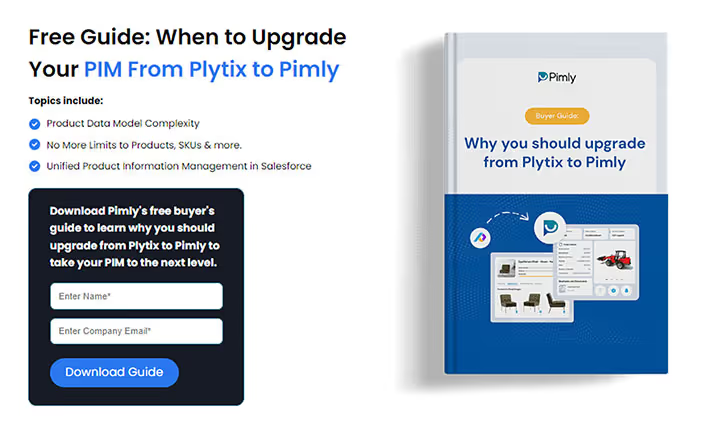
This combination of targeted lead magnets and personalized landing pages boosted conversion rates significantly, with some guides converting at rates of up to 30%.
Phase 2: Top of Funnel LinkedIn Ads Targeting
The next phase of our strategy was to expand our reach with top-of-funnel LinkedIn Ads targeting Salesforce PIM Group Members and custom lists using competitor solutions.
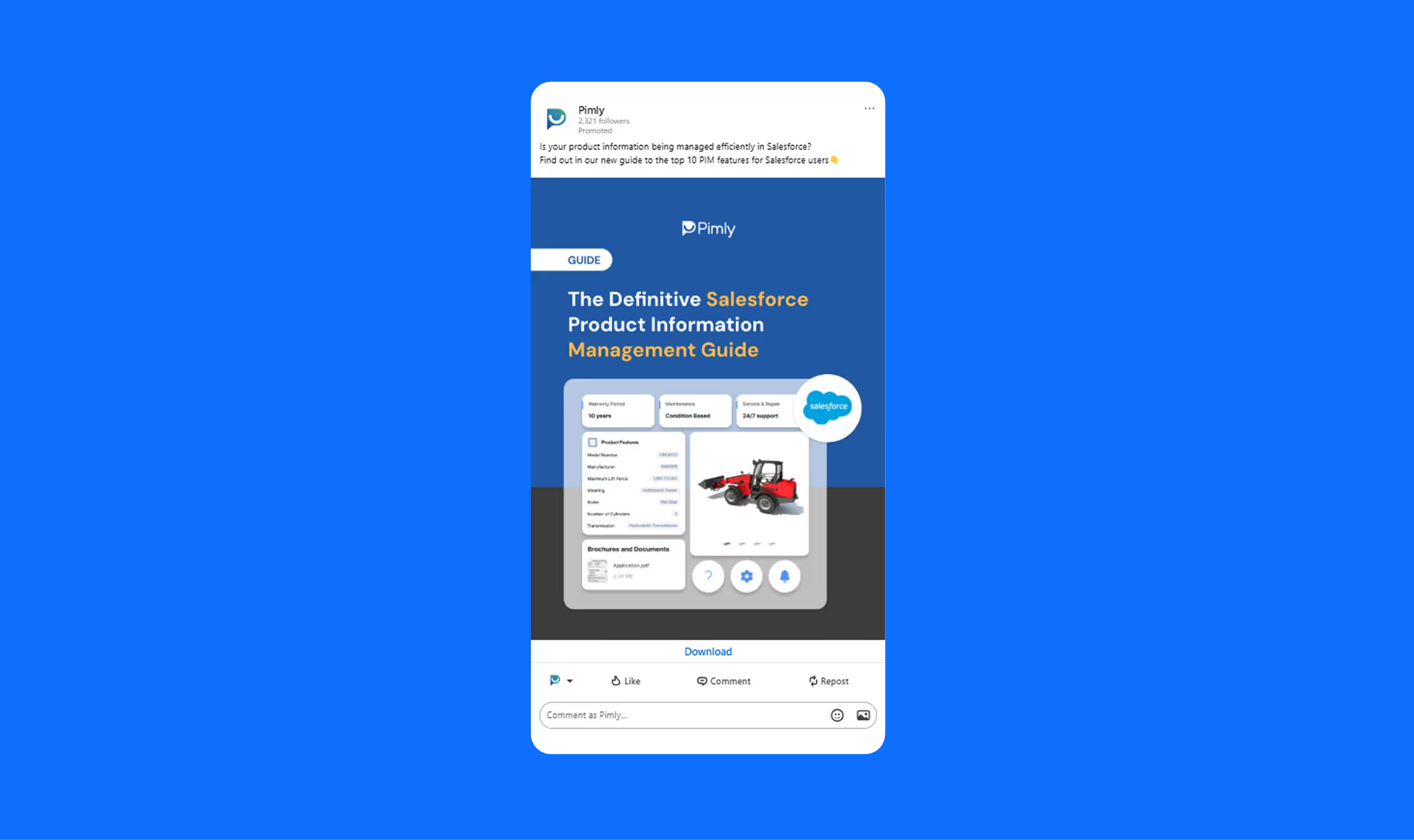
For the creative, we repurposed the lead magnet guides already in use on Google Ads. We personalized these further by tailoring the lead magnet to the group we were targeting.
For example, we used our Salesforce PIM guide for our Salesforce PIM group members, a Manufacturing PIM guide for Manufacturing PIM group members, and a Salesify comparison guide for Salsify group members.
We combined this level of targeting with LinkedIn Document Ads. These are by far the most effective ad formats to use alongside Lead Magnets, as they let you tease the first two pages of the document. This helps generate interest, but requires users to submit an email to access the full document.
With these targeted document ads in place, we now had a steady stream of leads coming in from two channels, Google and LinkedIn.
Phase 3: Retargeting on LinkedIn, Google Display, and Demand Generation
With leads coming in, the next phase was focused on converting booked demos through retargeting campaigns on LinkedIn, Google Display, and Demand Generation.
We started by building retargeting lists based on our past data. We separated these lists into two audiences.
- High-Intent Audiences: These were users who showed clear interest in Pimly’s software by having visited the demo page but not converting. These audiences showed high-intent actions that signalled they were ready for the next stage of the sales cycle, so we targeted them with CTAs to book a demo.
- Lower-Intent Audiences: These were users who showed some interest in the software, but were probably not ready to book a demo. These types of audiences included users who had visited the website in the last 365 days. Our aim was to bring these users back into the fold with retargeting campaigns promoting our top-performing lead magnets.
We started our retargeting campaigns on LinkedIn, but quickly rolled them out to Google Display and Demand Generation. This gave us a complete multichannel advertising funnel we could scale, leading to some truly impressive results.
The Results: +30% Conversion Rates, Doubling Lead Targets
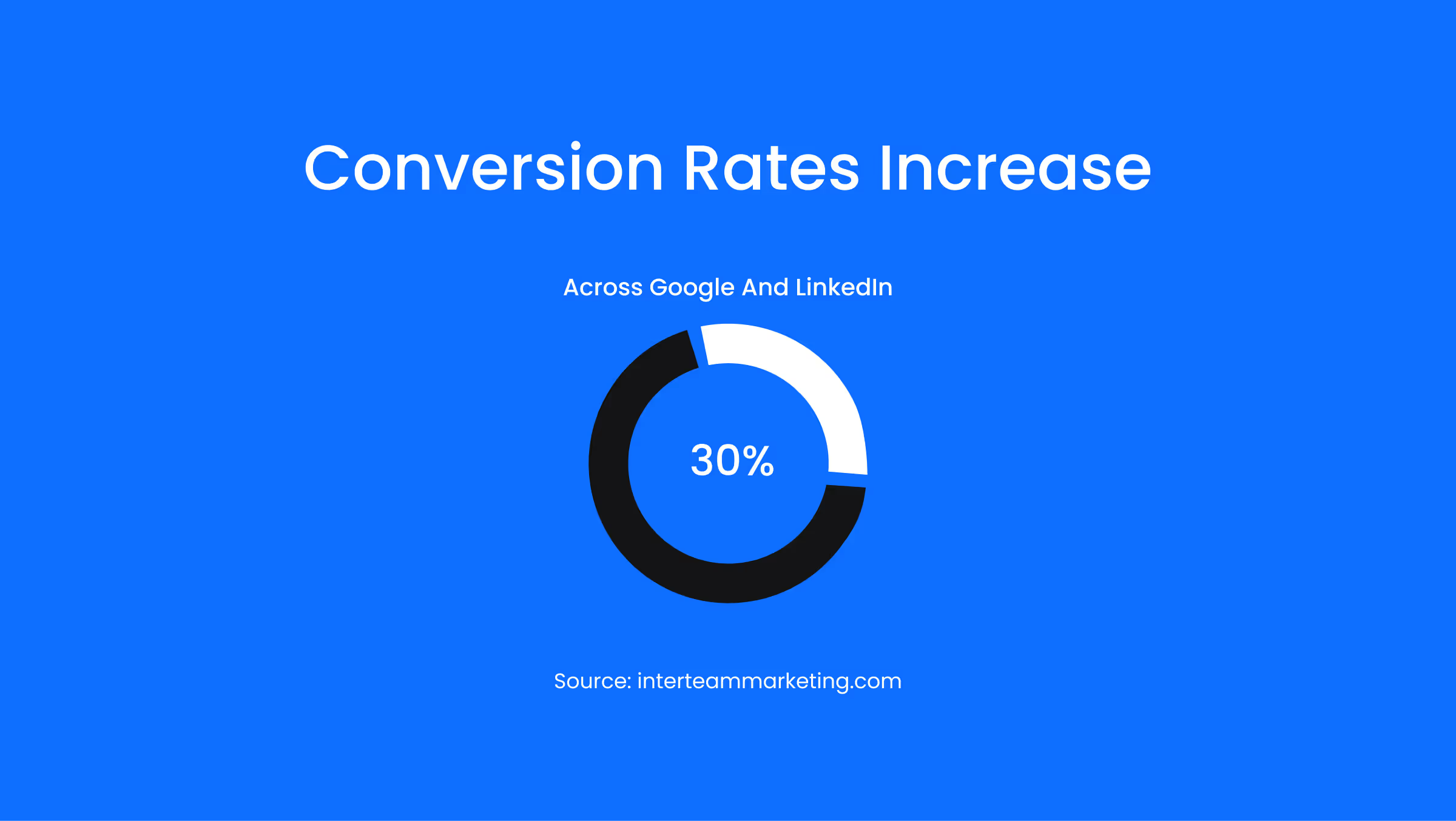
After partnering with InterTeam and launching eight distinct lead magnet assets, Pimly’s advertising performance skyrocketed. They experienced:
- 30% increase in conversion rates across Google and LinkedIn
- $100,000 enterprise deal closed within 2 months
- 60 qualified leads generated in 5 months (double the target)
For the first time, they weren't just competing in a competitive industry but were standing out as one of the top SaaS solutions in their space.
Scale Your Google & LinkedIn Ads With InterTeam
Pimly achieved 5x ROI in just two months of working with InterTeam, and your business can too.
Schedule a free strategy call to learn how we can help scale your lead generation with targeted PPC campaigns.
FAQs
Template question
Template text answer
More Case Studies
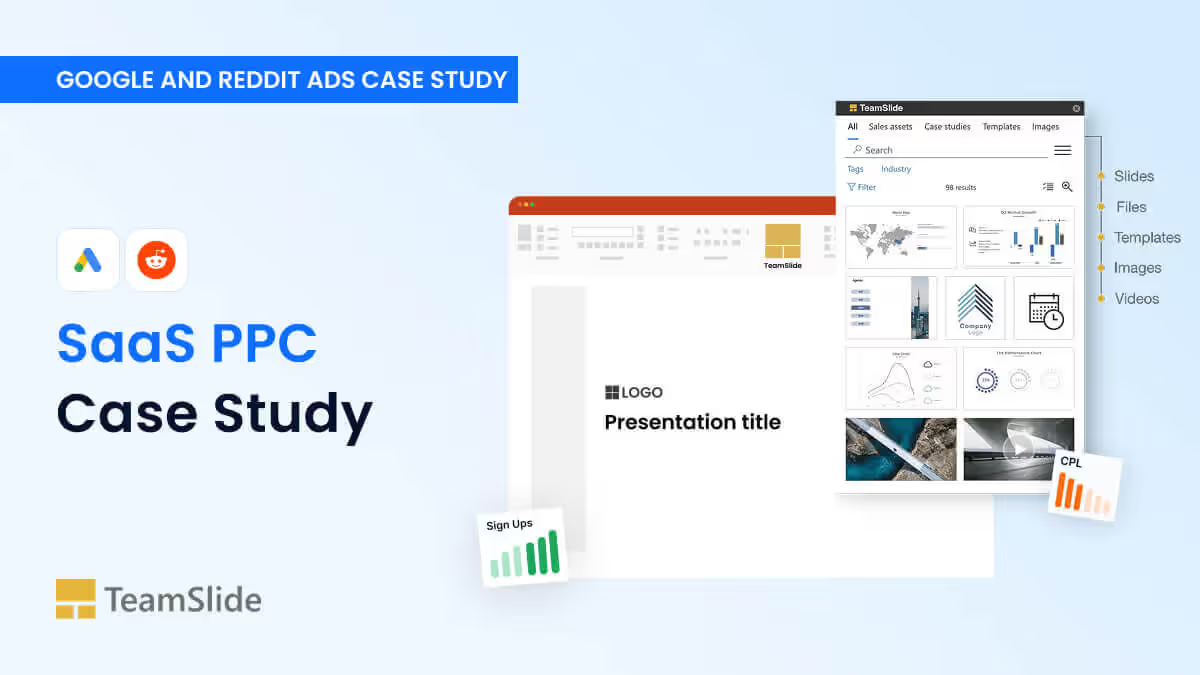
SaaS PPC Case Study
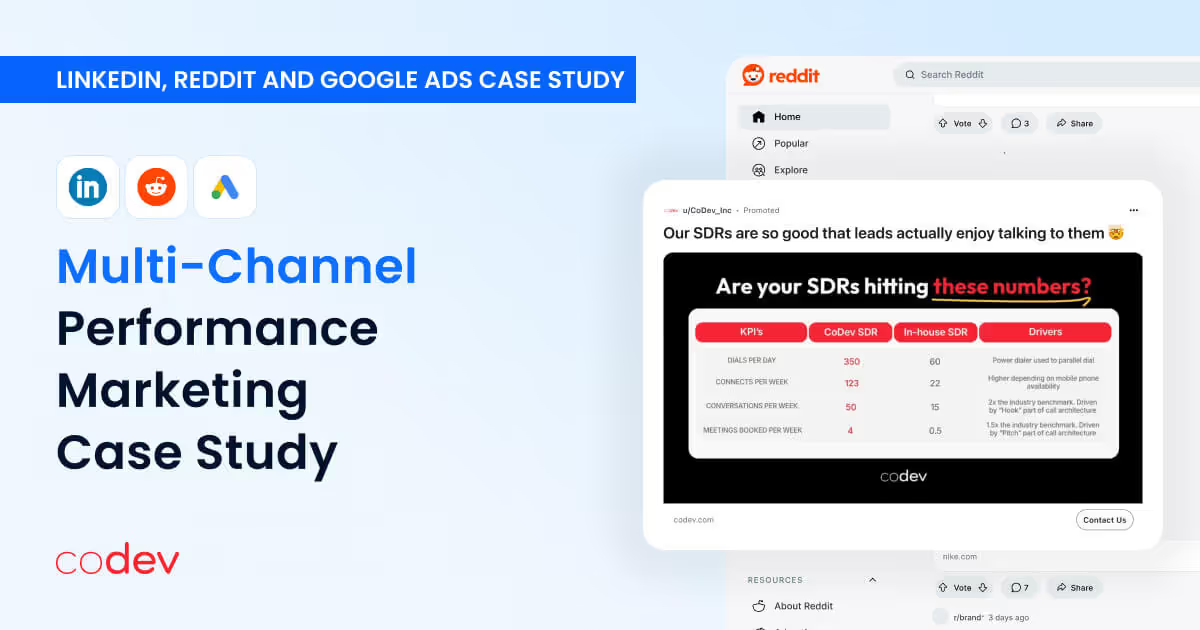
Multi-Channel Performance Marketing Case Study
